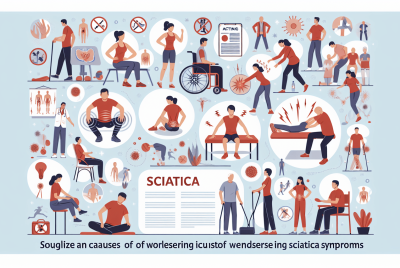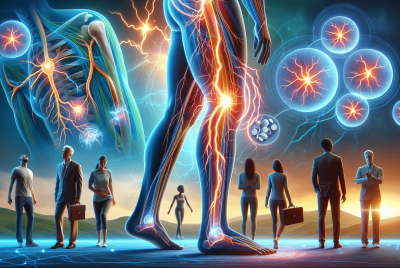2023 Guide Back Pain in Children and Adolescents: What Parents Need to Know…
Introduction
It’s disconcerting when your child is in pain. As a researcher and advisor, I want to help you understand more about the often overlooked issue of back pain in children and adolescents. In this article, we’ll delve into the causes, symptoms, and treatments, offering guidance on how you can best support your child.
Understanding the Nature of Back Pain in Young People
Defining Back Pain
Back pain can range from a dull, constant ache to a sudden, sharp sensation, and it can be either localized or widespread, affecting other areas like the neck and limbs.
Common Causes of Back Pain in Children and Adolescents
Back pain in this age group can be due to various causes, from minor muscle strains or ligament sprains to more serious conditions. Injuries from sports or heavy lifting can cause discomfort, as can poor posture over time. Conditions such as scoliosis, a sideways curvature of the spine, or spondylolysis, a stress fracture in the spine, can also be factors. Rarely, infections or tumors can be the cause.
Identifying the Symptoms of Back Pain
Children and adolescents may not always verbalize their pain clearly. Look for indicators such as slouching, limping, favoring one side when walking or running, or avoiding physical activities they usually enjoy due to discomfort.
Back Pain Diagnosis: What to Expect
Initial Consultation with a Pediatrician
When your child complains of back pain, the first step is to consult a pediatrician. They will assess your child’s health history, perform a physical examination, and possibly refer your child to a specialist, such as a pediatric orthopedist or rheumatologist, for further evaluation.
Diagnostic Tests and Procedures
Medical imaging, including X-rays, MRI scans, or CT scans, may be necessary to identify the root cause of the pain. Blood tests can also be useful to rule out infections or inflammatory conditions.
Exploring the Treatment Options for Back Pain
Non-Invasive Treatments
Typically, the initial treatment for back pain involves non-invasive methods. This might include physical therapy exercises to strengthen the back muscles, over-the-counter pain relievers, hot or cold compresses, and braces or support devices for conditions like scoliosis.
Surgical Interventions
In some cases, if the pain is due to a severe condition like a significant spinal curvature or a tumor, surgery may be required. However, this is usually the last resort when other treatments have failed to relieve the pain.
Ongoing Management and Care
Some children with chronic conditions will need ongoing management. This can involve regular check-ups, continuous physical therapy, and in some instances, pain management techniques.
Parental Support: Key to Child’s Recovery
Providing Emotional Support
Facing back pain can be stressful for a child. Your emotional support can help alleviate some of their anxieties. Encourage open communication about their pain and reassure them that their feelings are valid and you’re there to help them through their discomfort.
Creating a Comfortable Home Environment
A comfortable and supportive home environment can aid recovery. Use ergonomically designed furniture and encourage your child to take regular breaks from sitting. If your child is studying from home, ensure their workstation is appropriately set up to support their back.
Guidance for School and Social Activities
Help your child communicate with their teachers about their condition, so necessary adjustments can be made at school. Additionally, guide your child in social activities, helping them choose ones that don’t exacerbate their pain.
Prevention is Better than Cure: Tips to Reduce Back Pain Risk
Promoting Physical Fitness and Healthy Lifestyle
Encourage your child to stay active, which can help strengthen their back muscles and maintain a healthy weight, reducing the strain on their back. Below are some examples of current best selling active play products & games that are perfect for encouraging kids to engage in fun healthy & beneficial physical activities.
Emphasizing the Importance of Good Posture
Teach your child the importance of good posture, especially when sitting for extended periods or carrying a backpack.
Choosing the Right Backpack
Make sure your child’s backpack isn’t too heavy and is worn correctly – with both straps over the shoulders, not slung over one shoulder. Here are some best selling examples below that are light weight, wide shoulder straps & other good quality & functionality features.
Understanding the Long-term Implications of Back Pain
While it’s distressing to think of your child in pain, remember that most back pain in children and adolescents is treatable, and they can make a full recovery with appropriate treatment and care. For chronic conditions, like scoliosis, ongoing management can help ensure the child lives a full and active life.
Conclusion
Back pain in children and adolescents can be challenging for both the child and the parents. But understanding its causes, recognizing the symptoms early, knowing the treatment options, and providing adequate support can make the journey much smoother.
Further Resources
Here are two links to reputable sources that include scientific studies and commentaries related to the topic of back pain in children and adolescents:
- Children’s Hospital of Philadelphia – Back Pain in Children and Adolescents
- National Institute of Neurological Disorders and Stroke – Back Pain Fact Sheet
These webpages contain scientific information, studies, and expert commentaries related to back pain in young people, its causes, treatments, and preventive measures. They provide a valuable resource for anyone interested in learning more about this topic
Frequently Asked Questions
- When should I take my child to a doctor for back pain?
- If the pain persists for more than a week, if it’s severe, or if it’s associated with other symptoms like fever or weight loss, consult a doctor.
- If the pain persists for more than a week, if it’s severe, or if it’s associated with other symptoms like fever or weight loss, consult a doctor.
- Can back pain in children be serious?
- While most back pain in children isn’t serious, it can sometimes indicate severe conditions. Always seek medical advice to be safe.
- While most back pain in children isn’t serious, it can sometimes indicate severe conditions. Always seek medical advice to be safe.
- What can I do at home to help my child maintain good posture?
- Encourage regular breaks from sitting, promote active lifestyle, ensure their workstation and furniture support good posture, and check that their backpack isn’t too heavy.
- Encourage regular breaks from sitting, promote active lifestyle, ensure their workstation and furniture support good posture, and check that their backpack isn’t too heavy.
- Will my child always need surgery if they have scoliosis?
- Not necessarily. The treatment for scoliosis depends on the severity of the curve and the child’s growth. Bracing is often used for moderate curves, and surgery is typically reserved for severe curves.
- Not necessarily. The treatment for scoliosis depends on the severity of the curve and the child’s growth. Bracing is often used for moderate curves, and surgery is typically reserved for severe curves.
- Can physical activities worsen back pain in children?
- Overexertion or improper form can cause or exacerbate back pain. However, regular, moderate physical activity is generally beneficial for back health.












